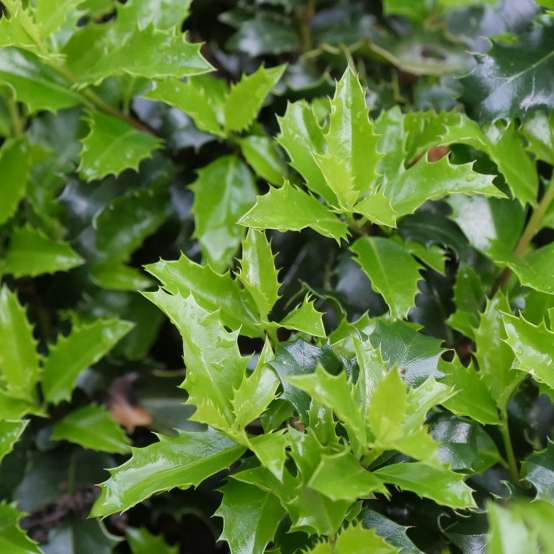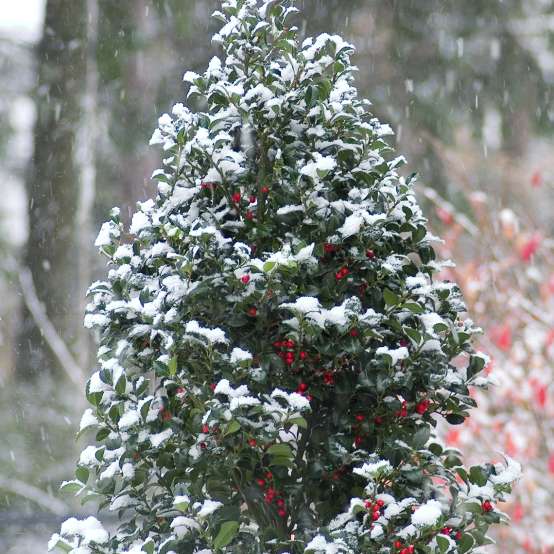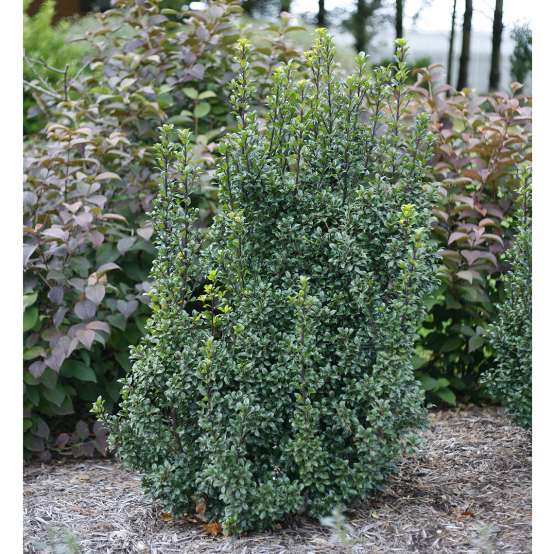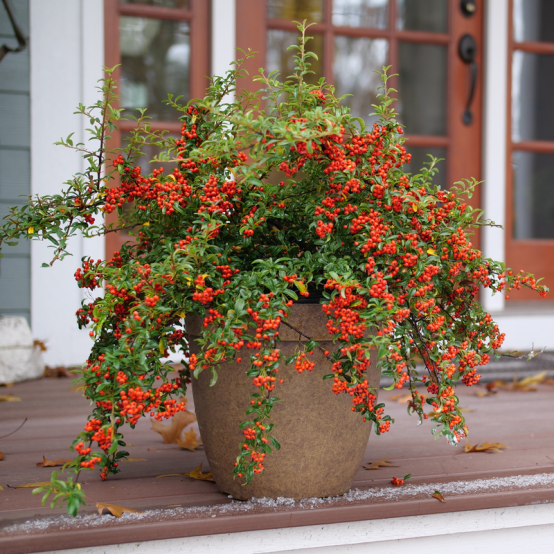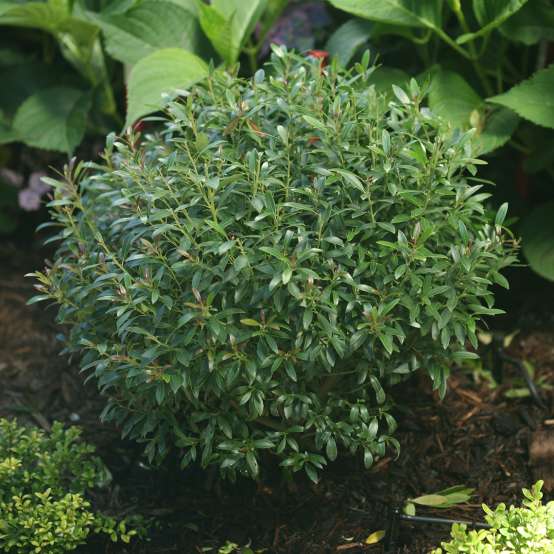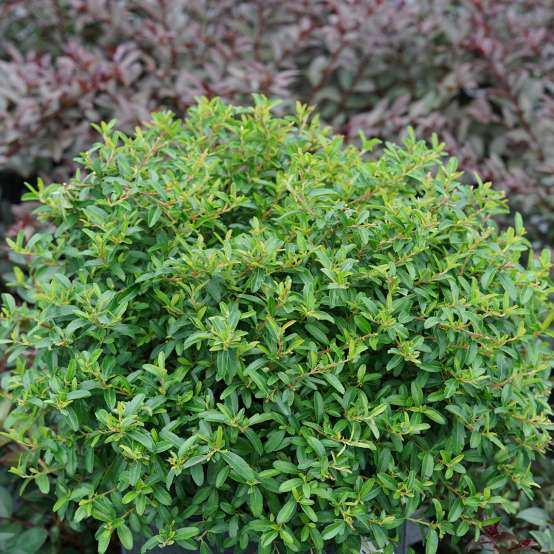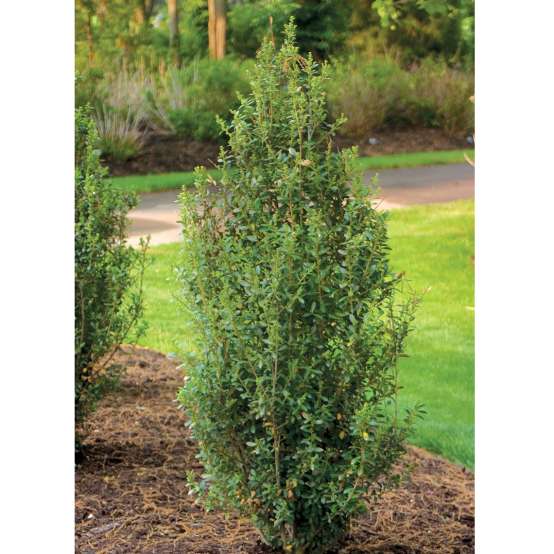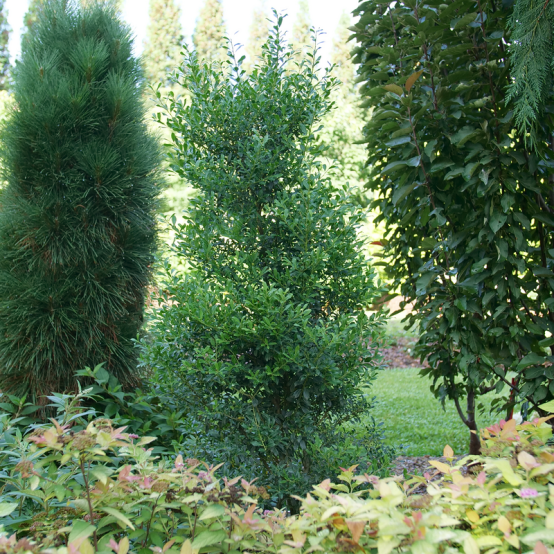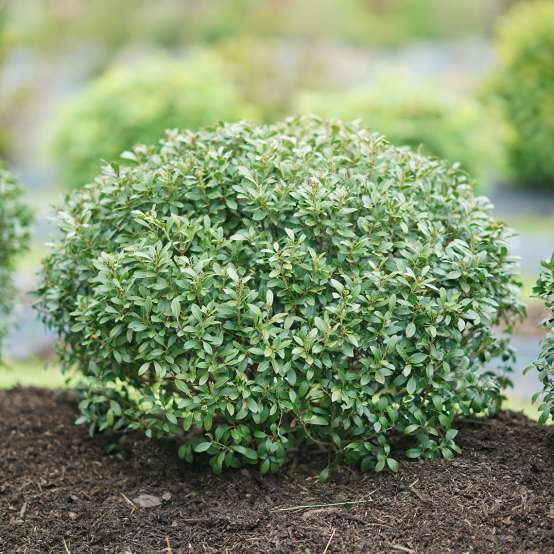Clicking the following controls will change the main image displayed above.
CASTLE ROUGE®

Blue holly
Ilex × meserveae
'HACH1'
PP#25,475




- Red new growth
- Burgundy winter color
- Male pollinator
- Description
Castle Rouge blue holly (Ilex × meserveae) is the biggest thing to happen to blue holly since Kathleen Meserve made the first crosses of Ilex aquifolium and Ilex rugosa back in the 1950s. All season long, its new growth emerges a glossy red-burgundy color for spectacular effect, and once winter comes, the whole plant turns a deep, dark burgundy. It's a male and will serve to pollinate the rest of the Castle series as well as other blue hollies, but unlike conventional male hollies, this one is handsome enough to give pride of place in the landscape.
- USDA Zone
- 5 - 7 (-20°F/-28.9°C)
- Exposure
- Full sun, Part sun
- Height
- 5-8'
- Width
- 4-5'
- Finish Time
- 1 season
- Type
- Evergreen
- Bloom Time
- Spring
- Flower Color
- White
- Foliage Color
- Green, Red
- Liner Sizes
- 2 1/4", 4", Quick Turn
General Care
Soil
Prefers moist, acidic soils. Shallow root system benefits from mulch.Pruning
Blooms on old wood. While blue holly is best left unpruned to avoid losing berries, male varieties like this one can be pruned after bloom if desired.Uses
Hedges; screens; specimen; landscaping.Growing Tips
Plant a male pollinator within 50' to ensure pollination; one male will pollinate up to 7 females. To minimize winter damage to the evergreen foliage, provide late-season irrigation if necessary and site so that plant is protected from harsh winds and sun.Features: Attracts pollinators, Clay soil, Cut flower, Evergreen, Foliage interest, Winter interest
Filters: Botanical genus: Ilex, Common name: Blue holly, Retail program: Proven Winners® ColorChoice®, USDA Zone 5, USDA Zone 6, USDA Zone 7, Exposure: Full sun, Exposure: Part sun, Bloom time: Spring, White flowers, Green foliage, Red foliage
Features: Attracts pollinators, Clay soil, Cut flower, Evergreen, Foliage interest, Winter interest
Filters: Botanical genus: Ilex, Common name: Blue holly, Retail program: Proven Winners® ColorChoice®, USDA Zone 5, USDA Zone 6, USDA Zone 7, Exposure: Full sun, Exposure: Part sun, Bloom time: Spring, White flowers, Green foliage, Red foliage

